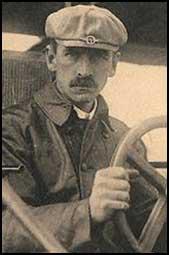Glen Curtiss

Glen Hammond Curtiss was born in Hammondsport, New York, in 1878. Originally a bicycle mechanic, he established his own motorcycle factory in 1902. Three years later he set a new world record of 137 mph on a motorcycle.
Curtiss then became interested in aviation and began producing motors for airships. He also started building aircraft and in 1908 his June Bug achieved the world's first ever one-kilometre flight. The following year he won the James Gordon Bennett Cup in France when his Golden Arrow travelled at over 46 mph. In 1910 Curtiss staged his sensational flight down the Hudson River from Albany to New York City.
In 1911 Curtiss produced the world's first practical seaplane. He also began work on a large flying boat, the Curtiss H-12, that he hoped to use to cross the Atlantic. On the outbreak of the First World War, the Royal Naval Air Service purchased two of these aircraft. They were so impressed with their performance that they ordered another sixty-two.
Curtiss founded the Curtiss Aeroplane and Motor Corporation in 1916. His company designed and produced several aircraft for the Allies during the First World War including a larger and better armed version of the Curtiss H-12, the Curtiss H-16, in 1917.
After the Armistice Curtiss continued to work on improving his plane and motor designs. Glen Hammond Curtiss died in 1930.
